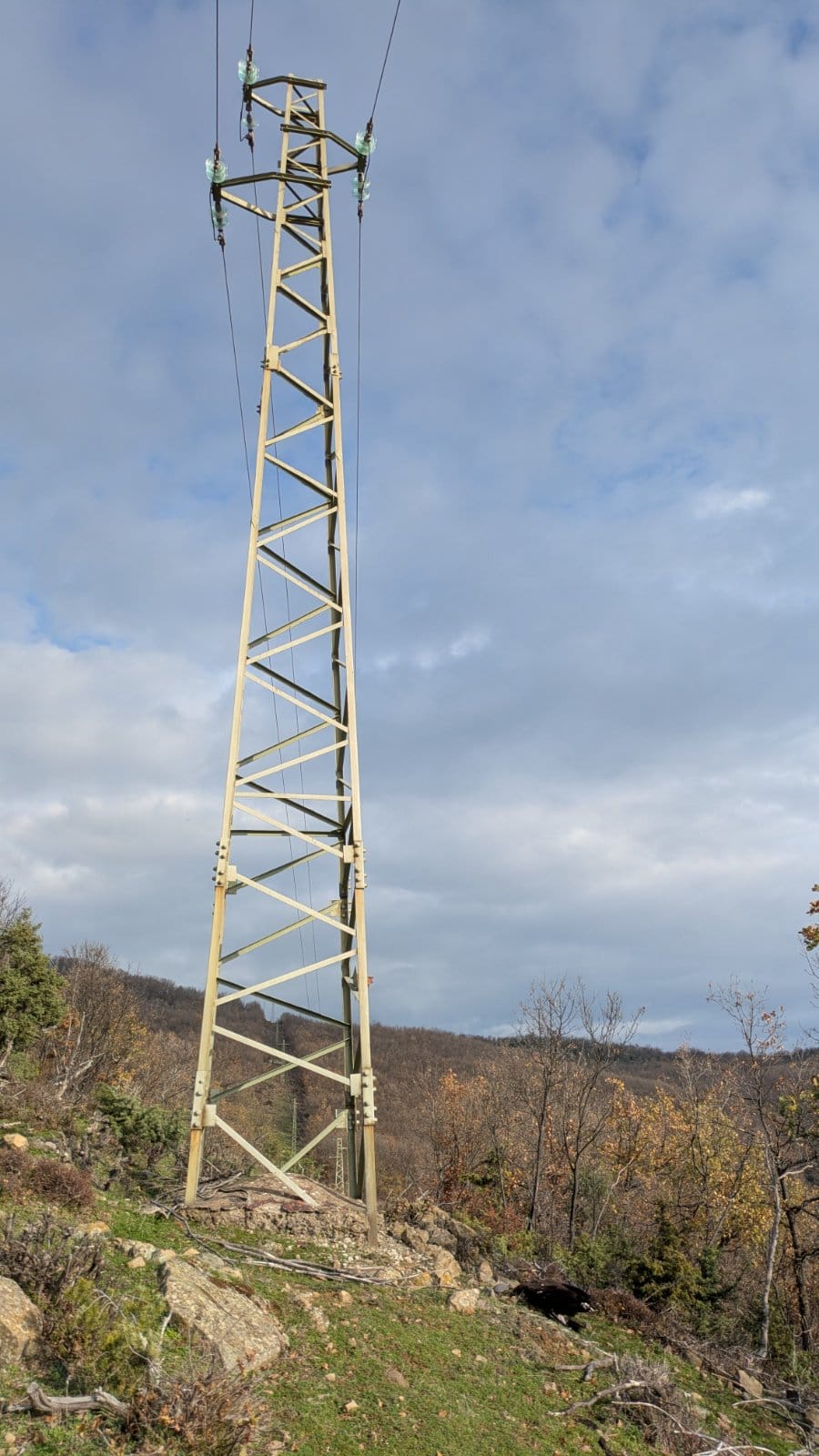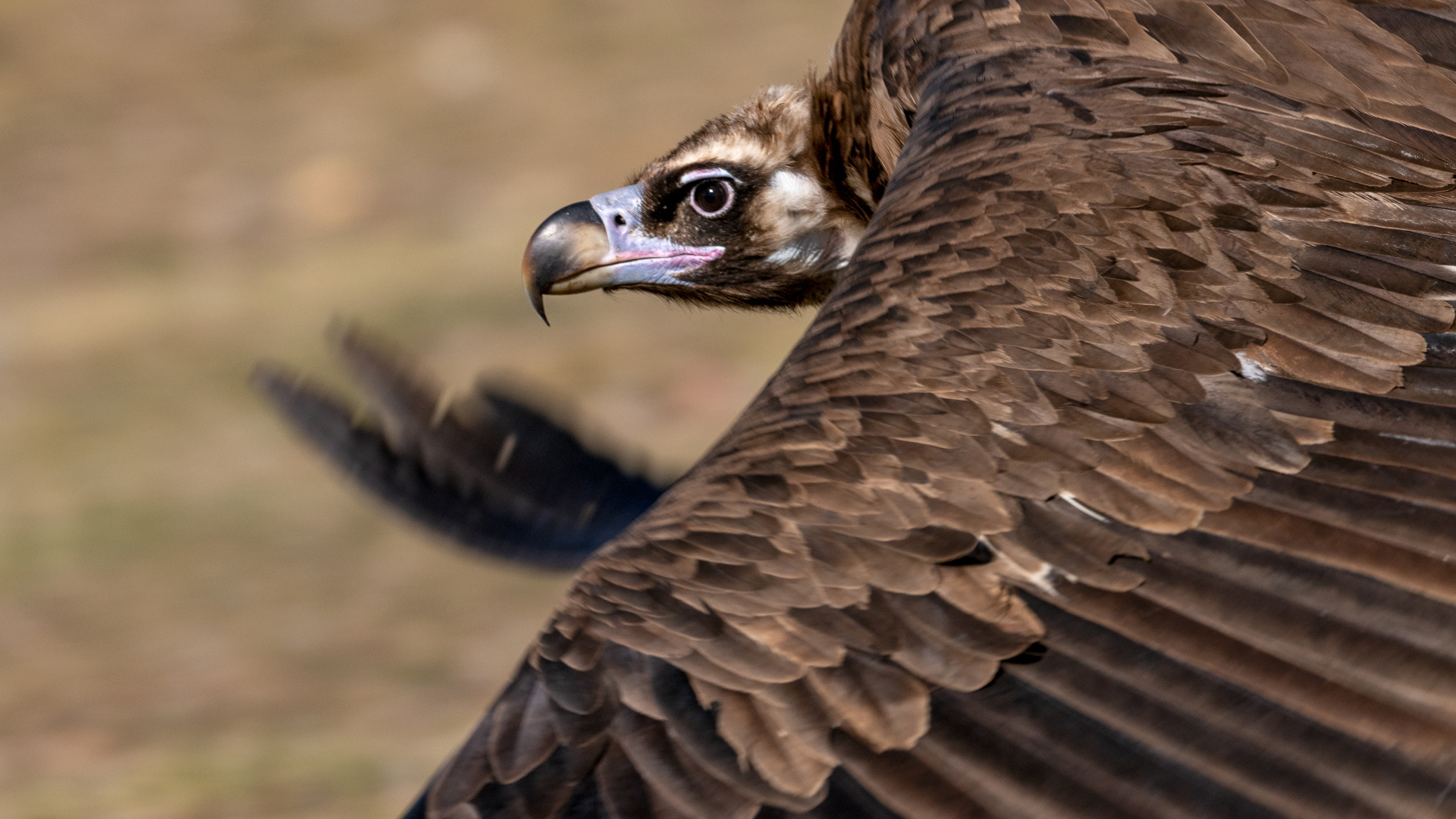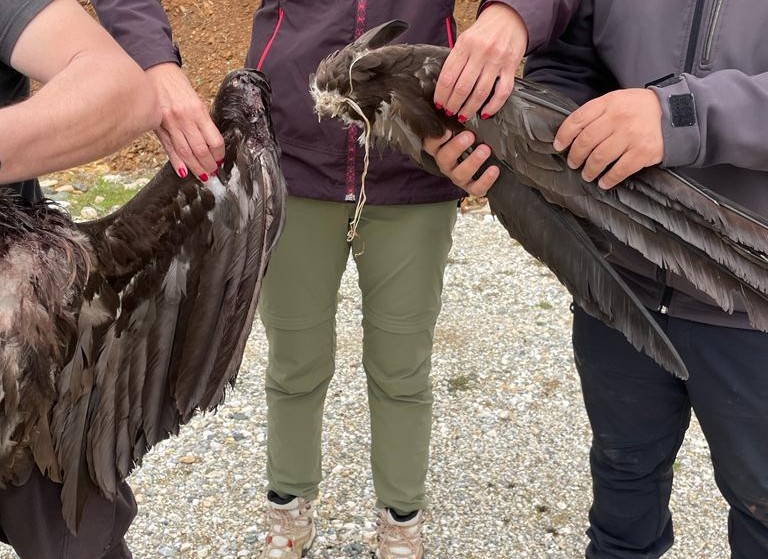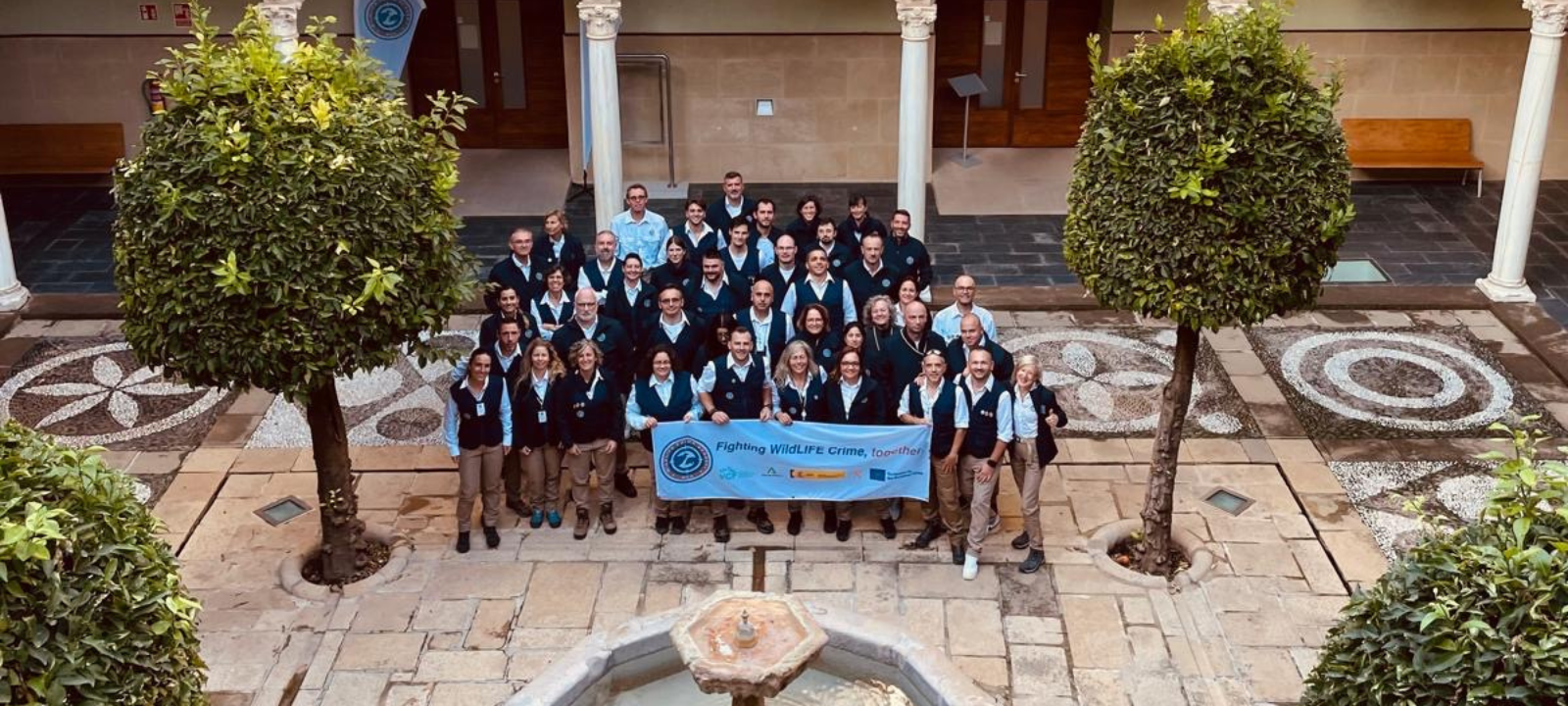LIFE Aegypius Return partners and Portuguese and Spanish authorities got together in Herdade da Contenda, southern Portugal, to discuss the work carried out and the next steps in the conservation of the Cinereous Vulture (Aegypius monachus).

From 12 to 15 May, the partners and stakeholders in the LIFE Aegypius Return project were hard at work. At Herdade da Contenda and in the picturesque town of Moura, a packed programme of technical visits and room meetings brought together around 50 participants.
Evaluation and Discussion
The week began with an evaluation visit by Elmen EEIG, the external auditing body of the European Commission. The work completed and the results achieved so far, as well as the project’s financial management, were presented and discussed in detail during indoor sessions and a technical field visit to the conservation work carried out at Herdade da Contenda.
The exercise of reflecting on the results achieved and the project’s next steps continued with the Portuguese and Spanish authorities responsible for land management, nature conservation and veterinary safety. The discussion was followed by another technical visit to Herdade da Contenda, to check out some of the conservation measures implemented and planned on the ground.
The fruitful collaborative work has led to the conclusion that, from habitat management to protect colonies, to reinforcing nesting sites and providing supplementary food for vultures, everything is in place to continue the conservation efforts of the Cinereous Vulture in Portugal and the western strip of Spain.
So far, the LIFE Aegypius Return project has achieved several of its key objectives: a significant increase in the population, the number of colonies, and breeding success. The partners have acted effectively to prevent or mitigate some of the main threats to the species, namely poisoning (in collaboration with the Portuguese police, GNR, through the creation of new canine patrol units and the effective implementation of the Antidote Protocol); food scarcity (through the establishment of Private Feeding Areas for Necrophagous Birds – APAAN); lead contamination (by promoting and providing lead-free ammunition in the hunting sector, through partner ANPC); and wildfires (through habitat management around the colonies).
The project has also led to a substantial increase in knowledge about the species and its causes of mortality, ensured rigorous monitoring, and contributed to the consolidation of the breeding colony in the Douro International area through the soft release of rehabilitated individuals in Portugal. Finally, the project’s numerous communication initiatives have undoubtedly helped raise awareness among various segments of society about the importance and conservation of the Cinereous Vulture.
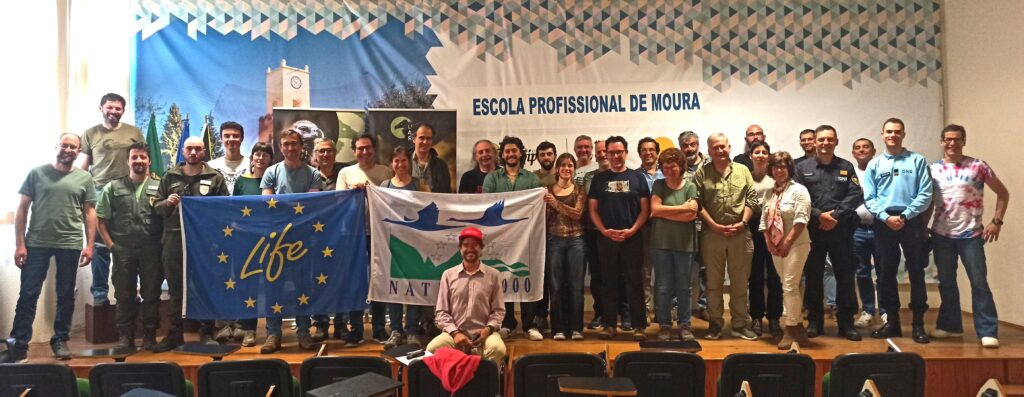
Contenda, a biodiversity haven and a living laboratory
Herdade da Contenda spans around 5,300 hectares in the Mourão/Moura/Barrancos Special Protection Area. It is owned by the Municipality of Moura and managed by the municipal company of the same name. It is an excellent example of integrated land management, combining nature protection with tourism, hunting, and forestry. With more than 400 species of flora, hills and streams, Contenda is home to a vast diversity of animal species, including the Cinereous Vulture.
Among the various landscape planning techniques applied there, special emphasis is placed on the meticulous forest management — organised by year, area, and type of intervention — as well as on habitat management aimed at promoting the European rabbit, a key species for ecological balance and an important food source for the Cinereous Vulture.
Thanks to careful management and efforts from the LIFE Habitat Lince Abutre project, two Cinereous Vulture pairs nested in Contenda in 2015, after an absence of over 40 years.
Herdade da Contenda is currently home to the second-largest breeding colony of the species in Portugal, benefiting from cross-border collaboration in its surveillance and protection. In 2024, this colony recorded 20 to 21 nesting pairs (five of which were already in Spanish territory) and produced seven chicks.

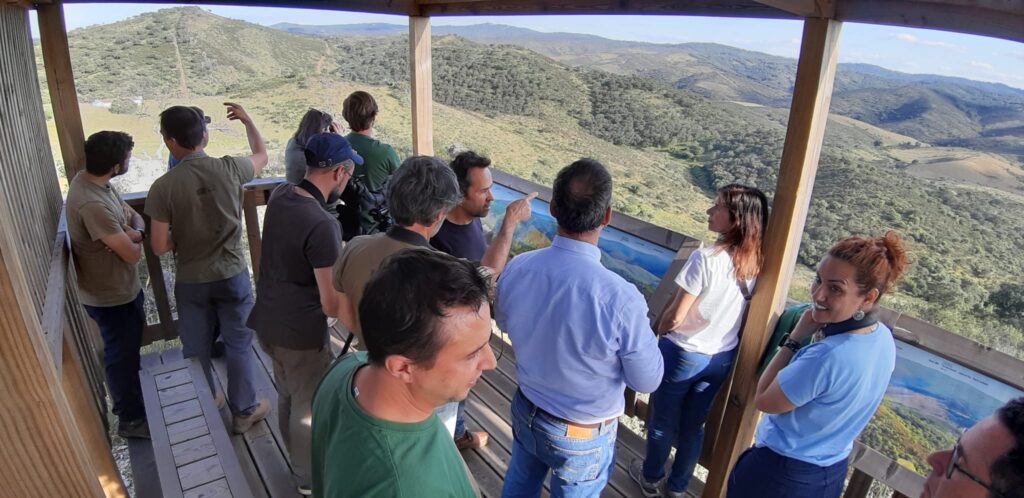
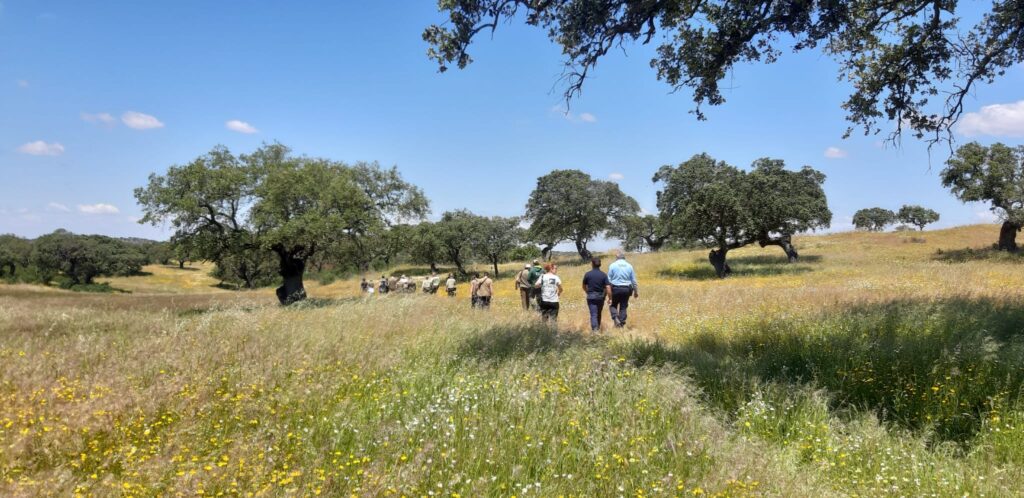
Technical visit to Herdade da Contenda © SPEA/Paulo Monteiro and VCF
Supplementary food for vultures
In southern Portugal, Herdade da Contenda is a pioneer in the supplementary feeding of vultures. In addition to the Private Feeding Field for Necrophagous Birds (CAPAN, a fenced area where dead animals or their parts are deposited) carefully managed in partnership with the League for the Protection of Nature (LPN), the estate recently formalised the first two APAAN (unfenced areas receiving extensive livestock carcasses), as part of the LIFE Aegypius Return project.
Coincidentally, just before the meeting, the first carcass (goat) was placed in the goat-dedicated APAAN. Remote monitoring confirmed the rapid consumption of the carcass by scavenger birds: Griffon Vultures (Gyps fulvus), Cinereous Vultures, and even a rare Rüppell’s Vulture (Gyps rueppellii), a Critically Endangered African species.

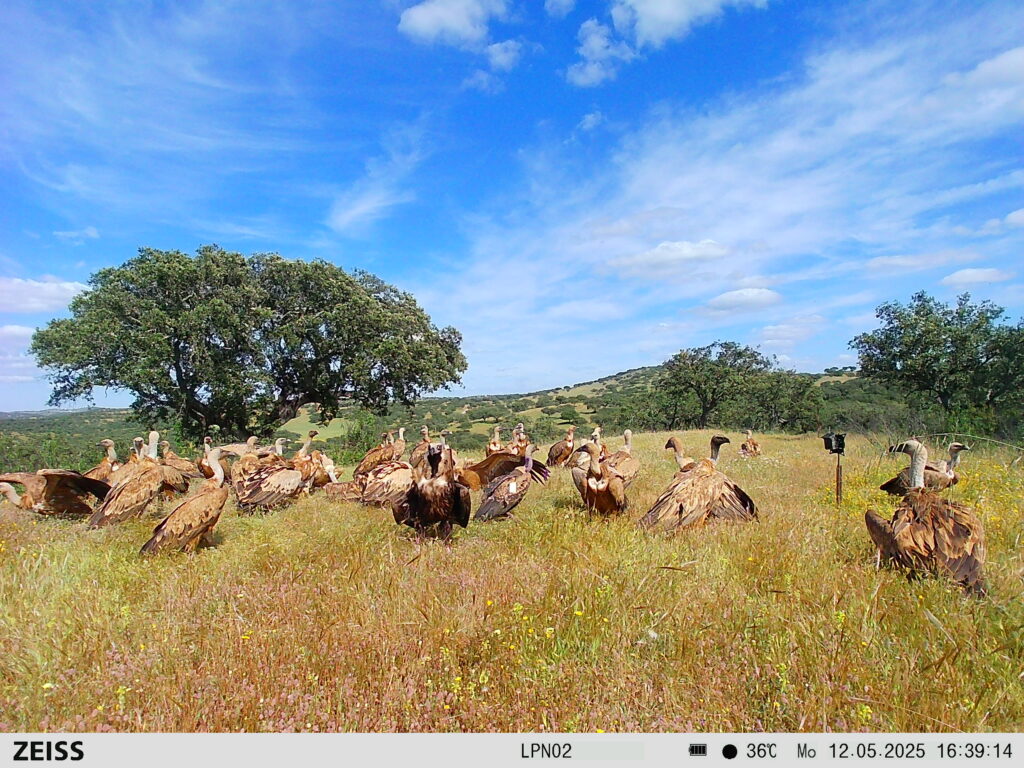
Images captured by remote monitoring of the APAAN at Herdade da Contenda. In the left-hand photo, a Rüppell’s Vulture is visible (the vulture furthest to the right). In the right-hand photo, a Cinereous Vulture can be seen at the centre of a group of Griffon Vultures.
Paradise at the Left Margin of Guadiana
LIFE Aegypius Return is not just about vultures. The project also includes actions to understand its socioeconomic impact (and that of the Cinerous Vulture conservation) in the target regions. These meetings also offer valuable opportunities to connect with local communities, culture, and traditions.
Herdade da Contenda and Moura are located on the left bank of the River Guadiana, in Alentejo – a region rich in both biodiversity and cultural heritage. It’s a true paradise for all the senses!
While in Moura, a fascinating cultural visit – organised by ADCMoura – took the participants to the Castle of Moura, classified as a Property of Public Interest since 1944, to the Urban Fence and to Mouraria – the historic neighbourhood built by the Moors in the 13th century to house the Arab inhabitants of Moura after the Christian Reconquest. This heritage has also been classified as a Property of Public Interest since 1993.
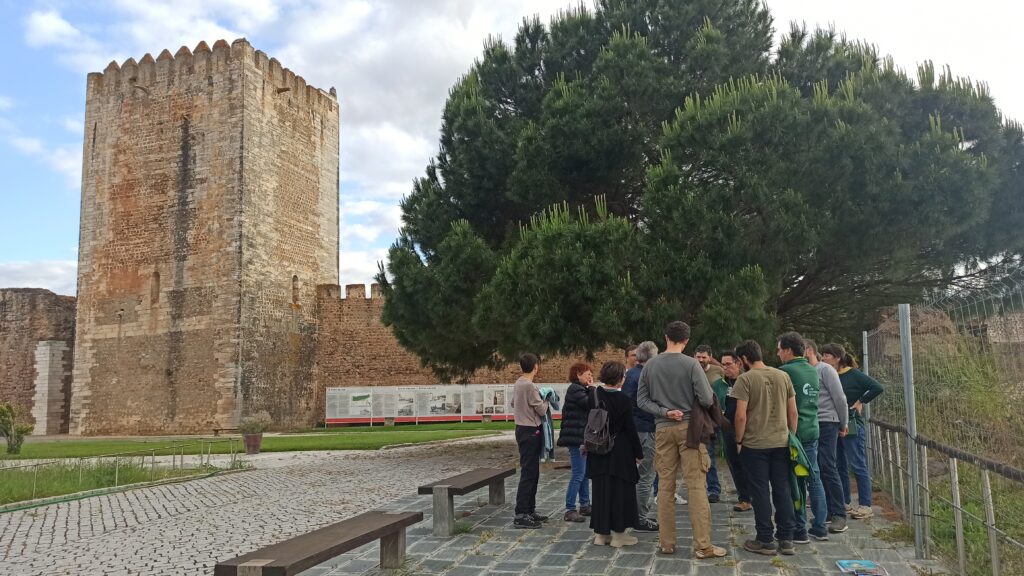
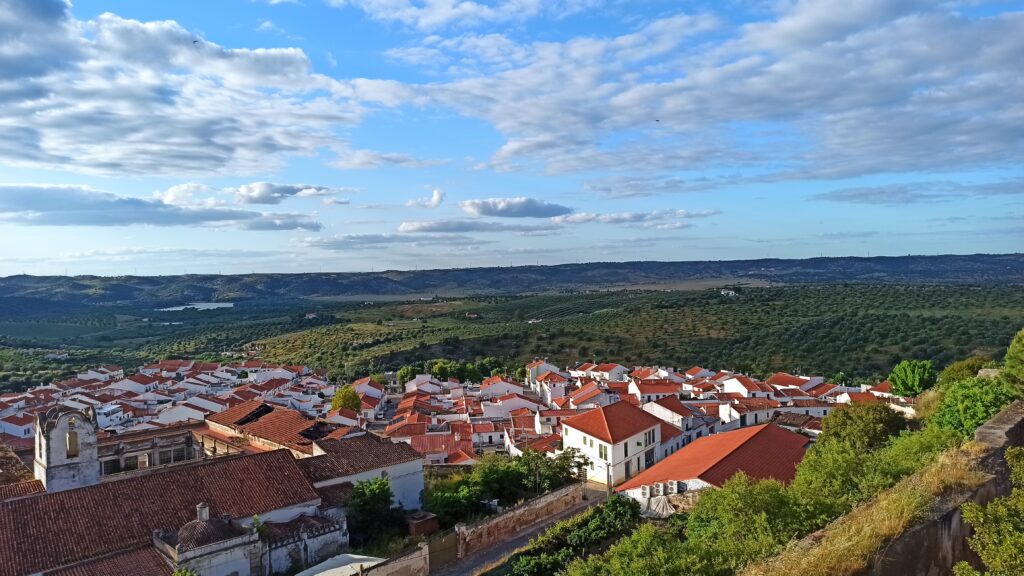
Visit to the castle and town of Moura. ©VCF
The last day included a visit to the Convent of Tomina and its surroundings. This convent was founded in 1686 and is located near the creek of Pais Joanes, at the western limit of Herdade da Contenda.
Participants also had several opportunities to enjoy traditional Alentejo cuisine, and the tour ended with a delicious chickpea stew, prepared by the staff of Herdade da Contenda to everyone’s delight.
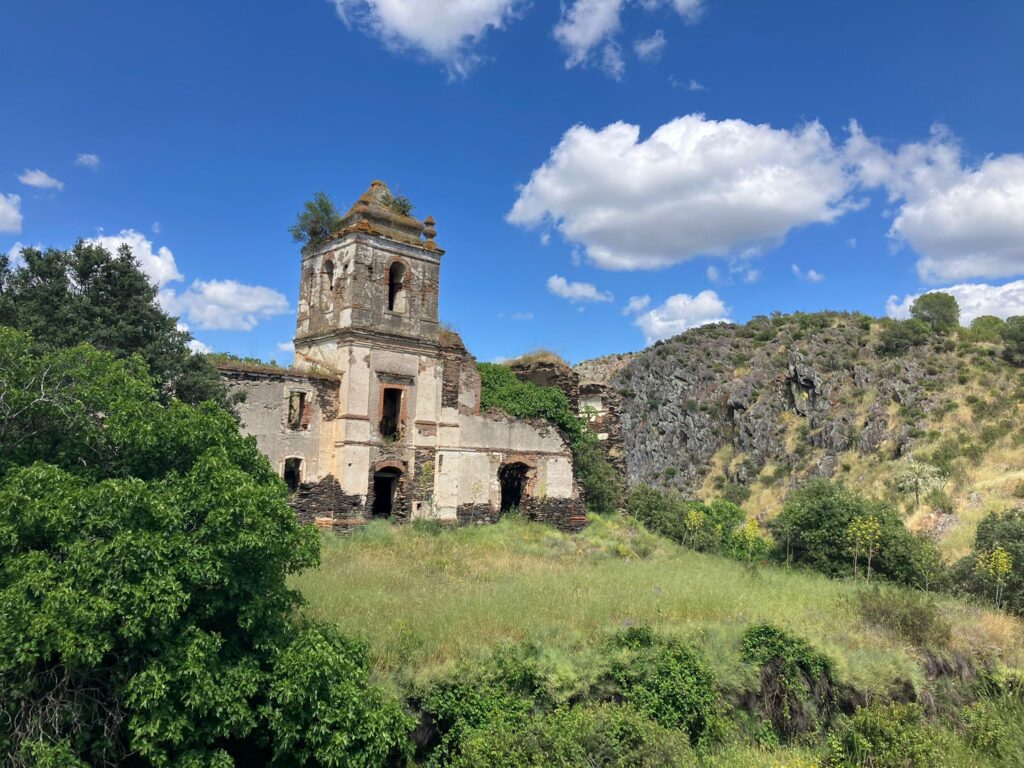
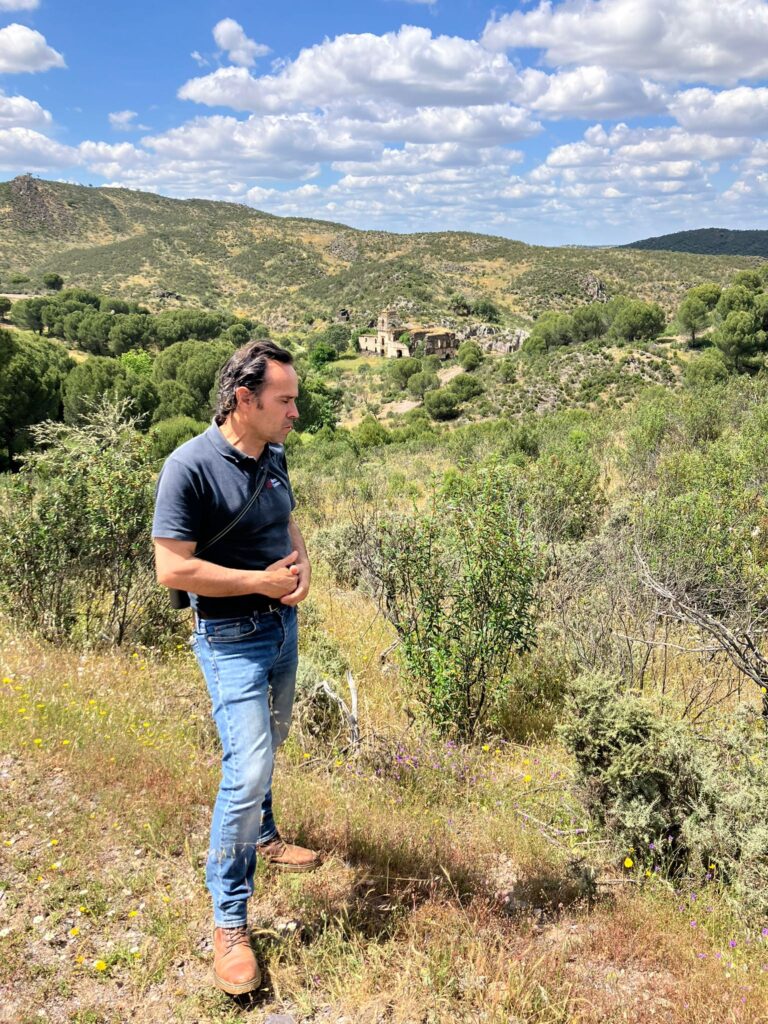
Tomina Convent and Pedro Rocha, manager of Herdade da Contenda. ©Eduardo Santos/LPN
Acknowledgements
The LIFE Aegypius Return partners would like to thank all the people and organisations that took part and collaborated in the activities of the project’s fourth progress meeting, namely: Elmen EEIG, ICNF, DGAV, Junta de Extremadura, Junta de Andalucía, and the students from the Universities of Coimbra and Évora, Maria Soares and Miguel Pires. Special thanks to the Escola Profissional de Moura (also to the director Paula Ramos) for kindly providing meeting rooms, to the Municipality of Moura for their support, and to ADCMoura (Filipe Sousa and Clara Lourenço) for organising the cultural visit to the town.
About LIFE Aegypius Return

The LIFE Aegypius Return project is co-financed by the European Union’s LIFE programme. Its success depends on the involvement of all the relevant stakeholders, and on the collaboration of the partners, the Vulture Conservation Foundation (VCF), the coordinating beneficiary, and the local partners Palombar – Conservation of Nature and Rural Heritage (with co-funding from Viridia – Conservation in Action), Herdade da Contenda, Sociedade Portuguesa para o Estudo das Aves, Liga para a Protecção da Natureza, Associação Transumância e Natureza, Fundación Naturaleza y Hombre, Guarda Nacional Republicana and Associação Nacional de Proprietários Rurais Gestão Cinegética e Biodiversidade.

